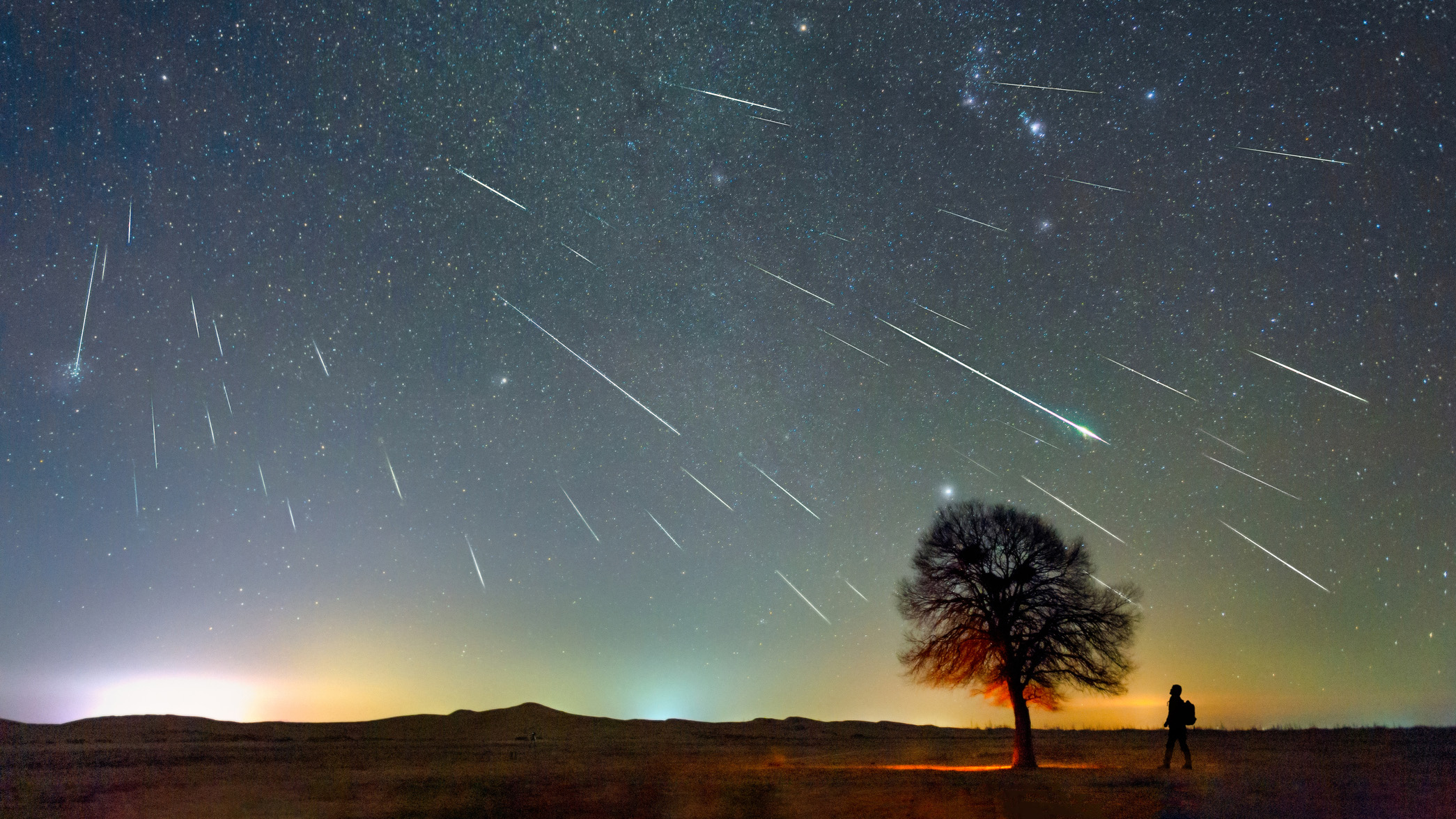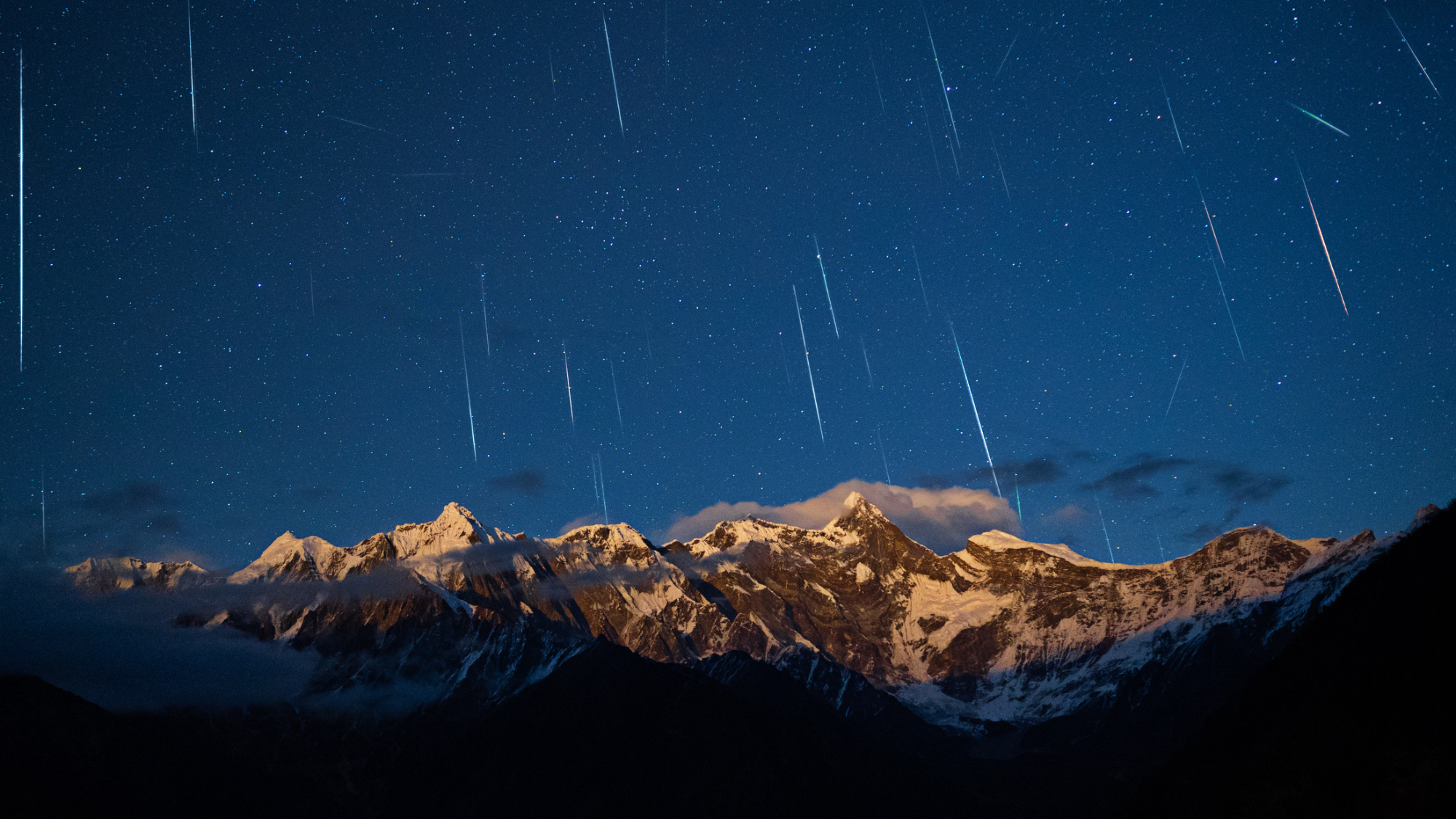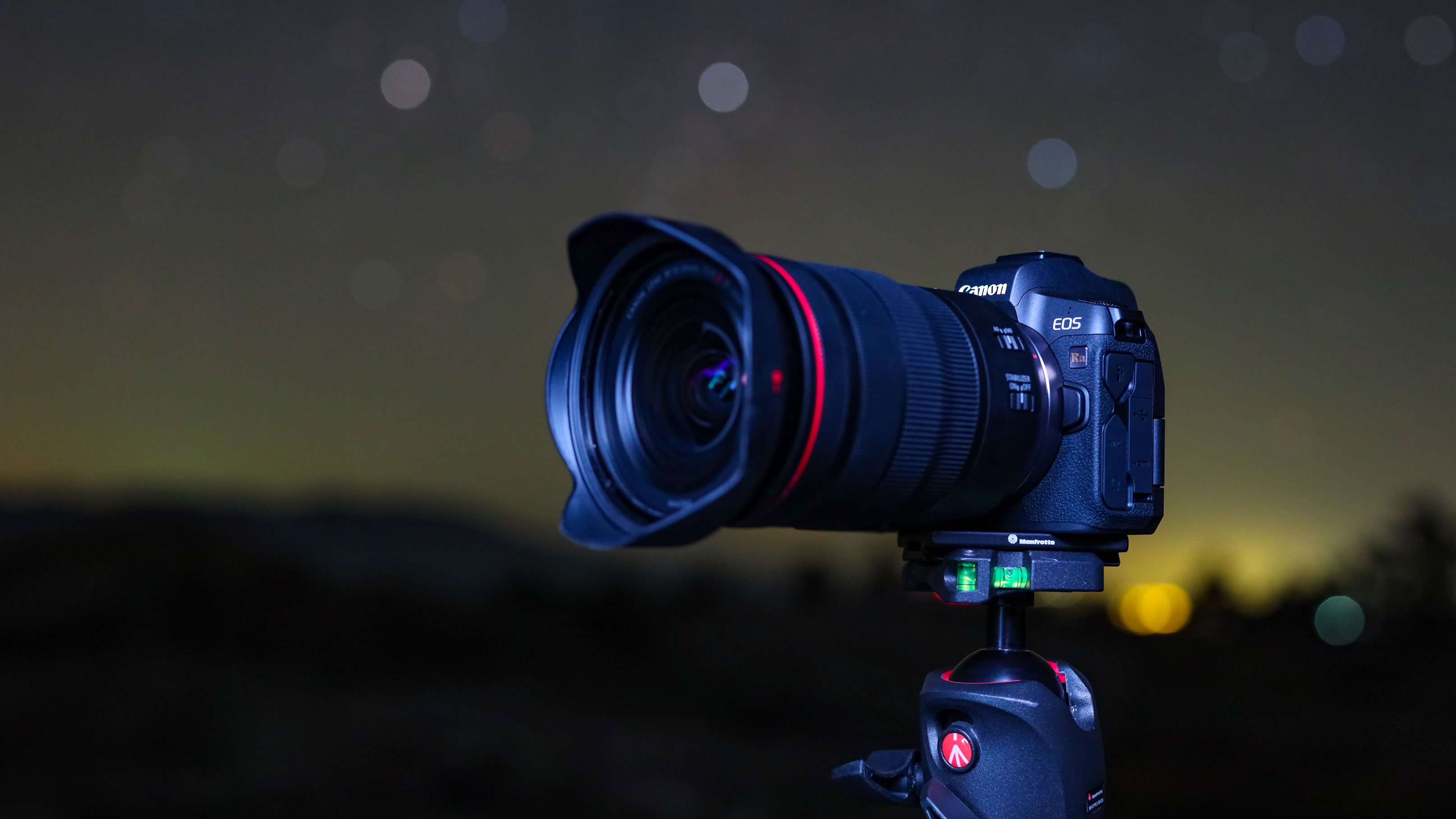
This year’s Geminid meteor shower has already started to delight stargazers. The celestial event kicked off on November 19 and will continue to accent the night sky until December 24, 2024, with peak meteor activity expected on the nights of December 13 and 14. And with more than 100 meteors whooshing through the sky per hour, it’s one of the most awe-inspiring astro events of the year.
Despite being one of the astrophotography in December highlights, this year’s peak will be slightly sullied by the bright light of a near-full moon, so I wouldn’t recommend planning a full-on trip to a dark sky location unless you want to, of course. But wherever you choose to photograph the meteor shower from, you’ll need the right astrophotography tools for the job.
It's possible to photograph shooting stars on any night of the year. But meteor showers like the Geminid bring lots of opportunities for stunning night sky photography, after all, a maximum estimate of 120 meteors could appear every hour so you'll have plenty of opportunity to capture the action.
Keep the best camera for astrophotography close to hand and read my tips below to capture your best meteor shots. But first, let's discuss what the Geminid meteor shower actually is...
What is the Geminid meteor shower?
A meteor or 'shooting star' is essentially just dust. Earth’s orbit of the Sun often takes it through stacks of debris left in the solar system by comets and asteroids. Mostly it's just dust particles – no bigger than grains of sand – that Earth's atmosphere slams into. As it does, these particles energize briefly and become disintegrating meteors.
Royal Museums Greenwich shares that, apart from the Quadrantids, the Geminids are the only major meteor showers not originating from a comet. As Space.com explains, "the Geminids are the product of an asteroid. The reliable shower produces bright meteors associated with the asteroid Phaethon, a strange blue rock that acts like a comet."
Although the Geminids are thought to be getting brighter each year, this year they'll have to compete against interference from bright moonlight, which could make them harder to see and photograph.

When is the Geminid meteor shower?
The Geminid meteor shower is generally a reliable annual shower and is already well underway in 2024. It started appearing in the night sky from November 19 and will peak tonight and tomorrow night, December 13 and 14.
How to photograph the Geminid meteor shower
A meteor shower typically only lasts a split-second – though occasionally as long as a second – as it scythes its way across the night sky. Even if you have lightning-fast reactions, that’s simply too quick for anyone to accurately engage the shutter. The solution is to shoot a long exposure of up to 30 seconds or longer, so the camera’s shutter is already open – ready and waiting – for the blink-and-you’ll-miss-it moment.
If you haven't done any after-dark shooting before, you might like to start by checking out the beginner's guide to photographing the night sky.
Visit the right location
I’ve already mentioned that the presence of a near-full moon means most photographers probably won’t be rushing to their nearest dark sky location. But usually, picking a site with as little light pollution as possible is key when capturing astrophotography, and meteor showers are no exception. After all, you’re going to be opening the shutter for at least 25 seconds, so a lot of light is going to get in.
This interactive world light pollution map and the Dark Site Finder are both very useful for scouting good locations away from the bright lights of urban areas. However, if you can't travel outside a city, you can still try to photograph shooting stars. Find somewhere where no streetlights are going to interfere with your composition and place your camera under the shadow of a building to help mitigate the abundance of light.
Although the darkest skies are between midnight and dawn, the radiant of the Perseids – the constellation of Perseus – is ‘up’ right after dark in the northern hemisphere, so you can start looking for shooting stars right away. Or, while you wait for the night skies to darken, you could try to capture a beautiful crescent moon just above the southwestern horizon before it leaves the sky.
The right gear

Our best astrophotography tools buying guide has you covered for all the gear you'll need to photograph the Geminid meteor shower this year. However, here's a quick overview for the key kit you'll need...
Full-frame camera
You can use any DSLR or mirrorless camera as long as it has a manual mode, and you can shoot long-exposure images for at least 30 seconds. However, one of the best full-frame cameras is the best option because it will capture more light and feature less image noise when used at high ISOs.
Wide-angle lens
Since you want to capture as much of the night sky as possible to maximize your chance of capturing shooting stars, a wide-angle lens is best. The best lenses for astrophotography have an effective focal length of between 10mm and 28mm.
Tripod
Keeping your camera steady is an absolute must for long exposures, so you'll need the best tripod you can get. If it's windy, don't use the tripod's extension arm. Check that the horizon is level before taking a shot.
Other gear
A shutter release cable that can be locked, or an intervalometer or remote control, will be helpful for taking repeated long exposures without having to manually depress the shutter button every 25 seconds.
Find the right composition
Although it's tempting to point your camera at the radiant, meteors can just as easily appear anywhere in the sky. By pointing at the radiant you'll likely miss as many meteors as you'll catch, so it's better to get something interesting in the foreground – perhaps an old barn, a tree, or a sculpture – in your composition to add interest. That way you'll have a beautiful landscape photo that will hopefully feature a shooting star or two.
Taking the shot
With your lens's focus set to infinity, and its aperture to around f/2.8 (or as open as possible), choose ISO800 or ISO1600 (or even higher if you're in a really dark sky site) and fix the shutter speed to 25sec. Take the shot, and if you're not happy with the result as a stand-alone image, make adjustments and re-take.
Once you're happy – here comes the fun bit – take the same shot 50-200 times (make sure you're shooting in RAW) over the course of an hour or two. Just be careful not to switch on any lights, or nudge your tripod during the shooting period so refrain from illuminating the area with your phone screen and stand well back.
Either way, you'll end up with hundreds of shots of the night sky, some of which will hopefully have shooting stars within them. If that's all you're after, you can extract the images that do feature a shooting star and ditch the rest. However, if you use the free software StarStaX, you can drag-and-drop all 200 photos into it to create a star-trail image, featuring shooting stars, of course. It's also possible to do this on Adobe Photoshop.
You might also like...
Hungry for more astrophotography tips: How-to guides and videos on getting your best shots? Learning how to shoot star trails is a good place to start.
If you're looking for more specialist astrophotography kit, investing in the best star tracker camera mounts is a great choice, since they will allow you to shoot at longer exposures without experiencing star trails.







